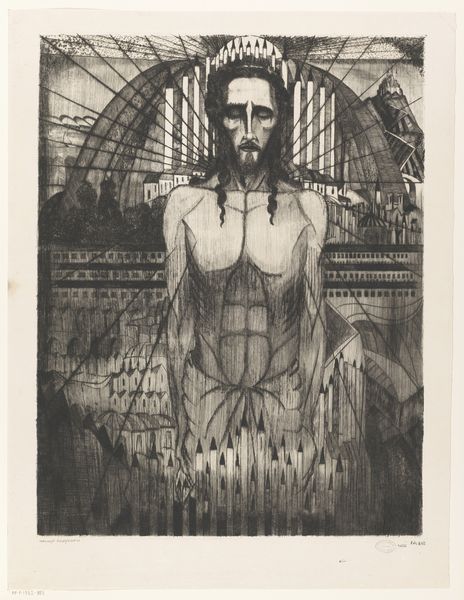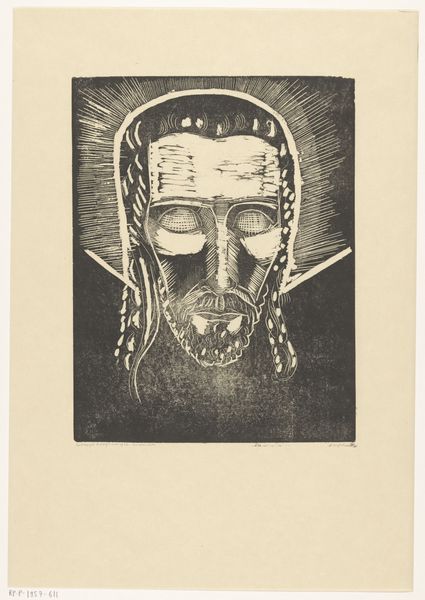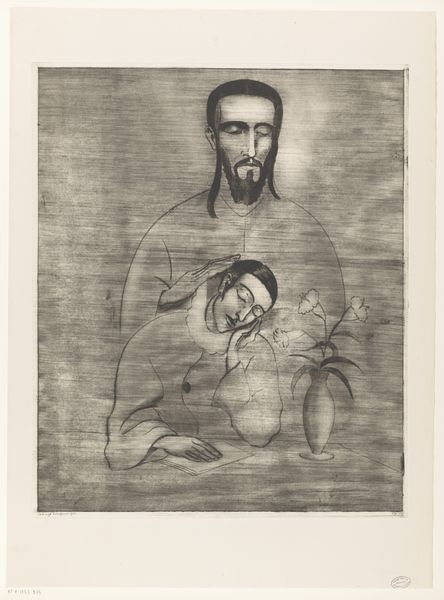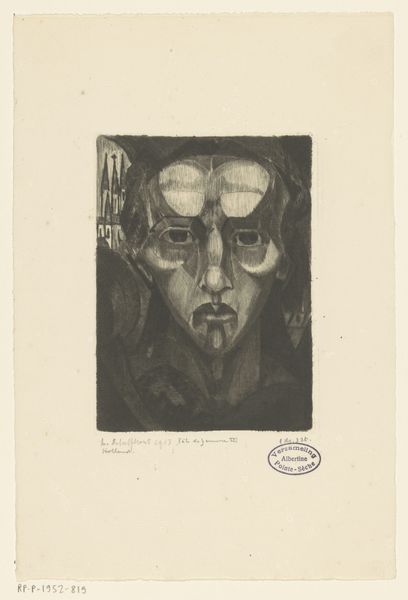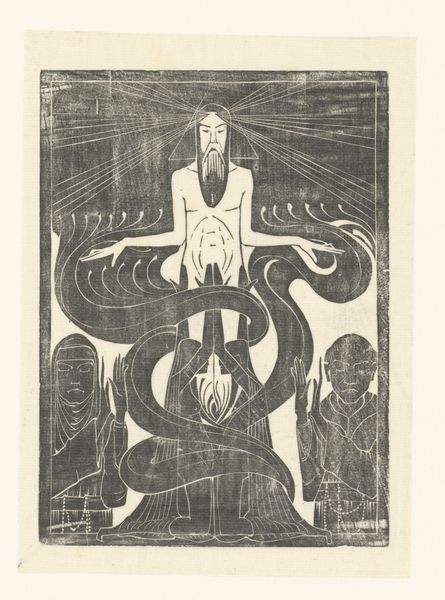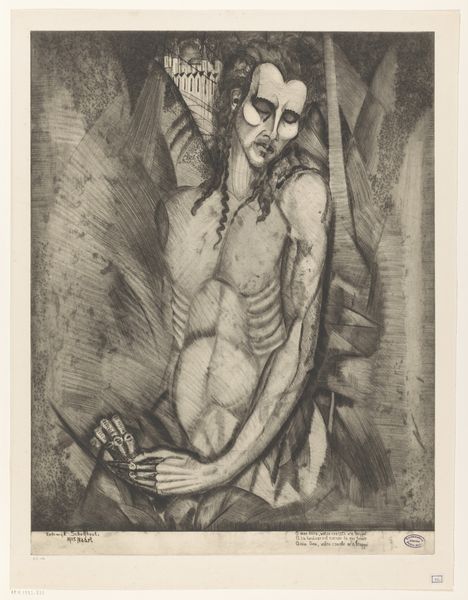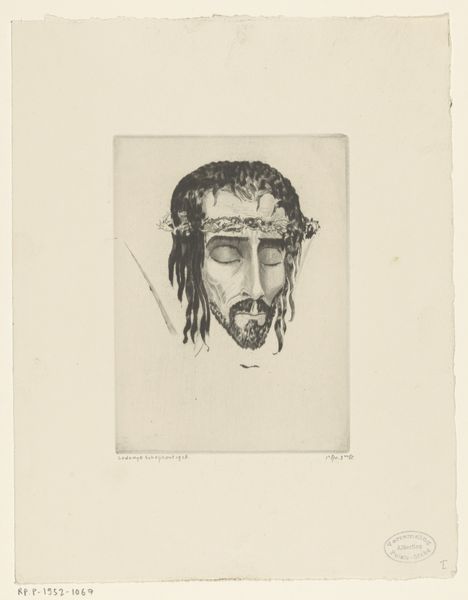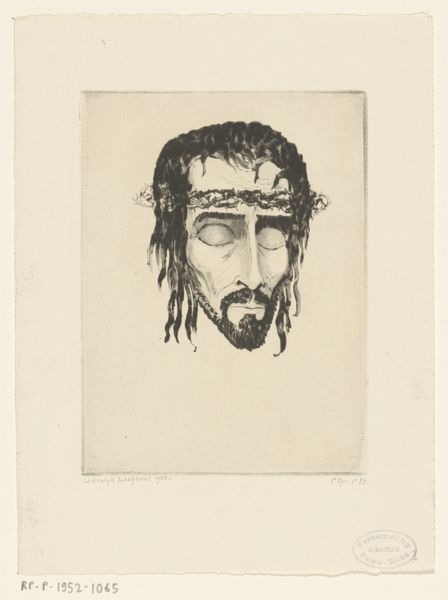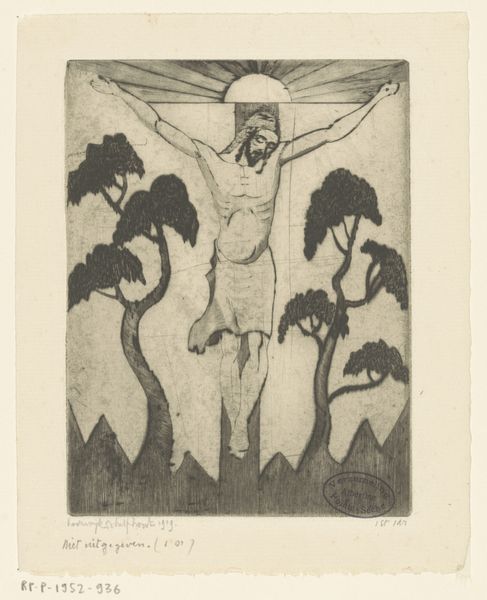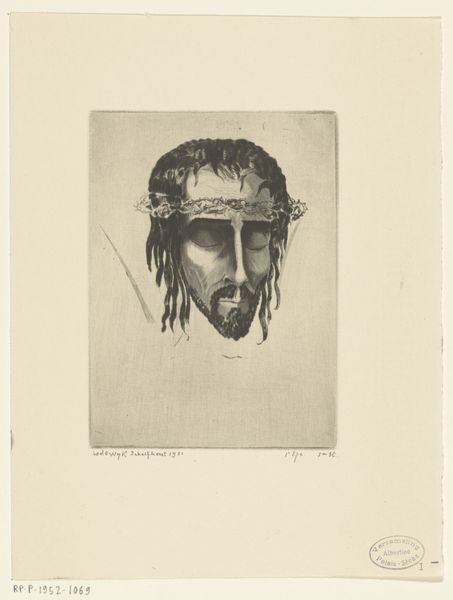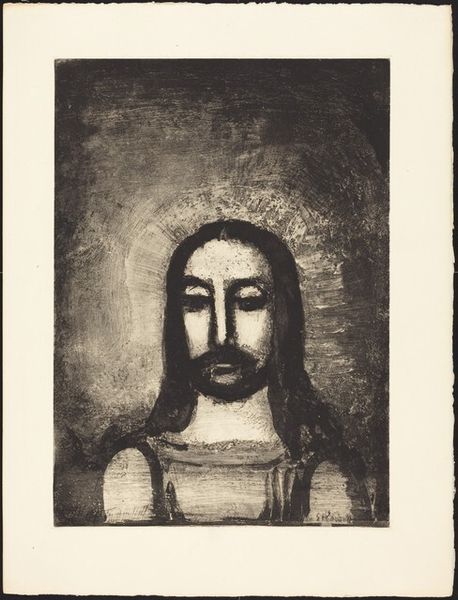
Dimensions: height 636 mm, width 490 mm
Copyright: Rijks Museum: Open Domain
Curator: Immediately striking, wouldn't you say? Lodewijk Schelfhout's 1916 etching, "Christus te midden van kathedralen," presents us with a truly evocative image. Editor: It’s overwhelmingly melancholic. The stark contrast in the etching creates this pervasive gloom, despite the centrality of the figure of Christ. The overall impression is quite heavy. Curator: Consider the time in which it was made—1916, in the midst of World War One. It's hard not to view the image through the lens of that immense conflict, to see it as a comment on the failure of societal structures, even the Church, to prevent the horror. Editor: The very composition seems to echo that. Note the lines that radiate outwards, mimicking the architecture—all leading the eye toward Christ, but the tonality subverts any sense of hope that might be inferred from such a layout. Even Christ’s crown is made up of architectural structures which could represent a burden to the figure. Curator: Precisely. The figure of Christ merges with the very cathedrals he's meant to represent, as though they are inseparable—and perhaps mutually implicated. We see the rise of Modernism influencing the artist and depicting a man amidst his creation. Note that these towering Gothic structures almost imprison the figure of Christ. Editor: His physique feels oddly classical in its presentation, standing out in this more abstracted, stylised, almost Symbolist-influenced environment. The contrast here feels like a conscious choice to juxtapose old and new. Curator: It is also possible to see him dwarfed by those cathedrals and thus comment on his reduced role and influence during times of upheaval and profound disillusionment. Schelfhout’s style of Medievalism presents a commentary on society, perhaps. Editor: So, an artifact from a period of crisis, where established forms meet avant-garde techniques in order to create something new, but deeply, somberly, felt. Curator: Yes, and in that, a potent reflection on faith and society amid unimaginable trauma.
Comments
No comments
Be the first to comment and join the conversation on the ultimate creative platform.
